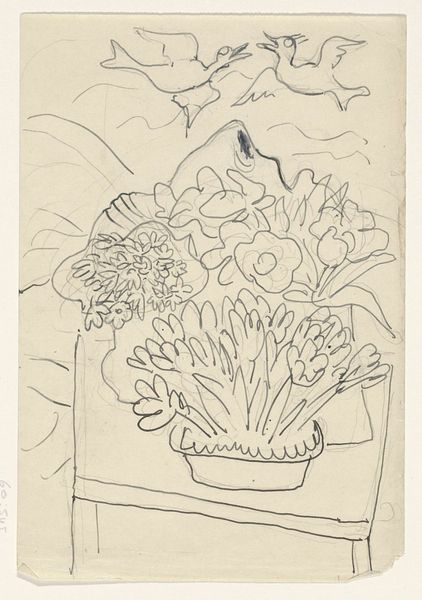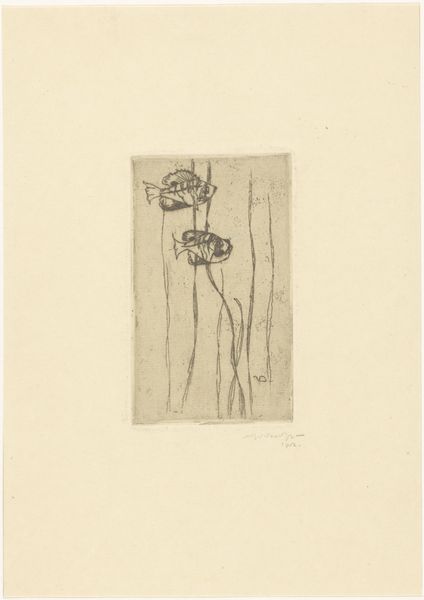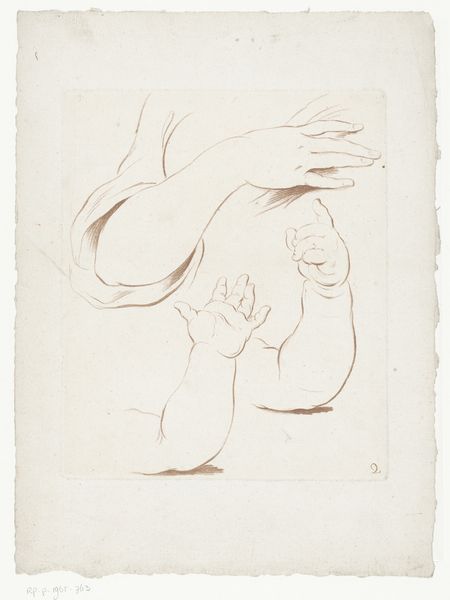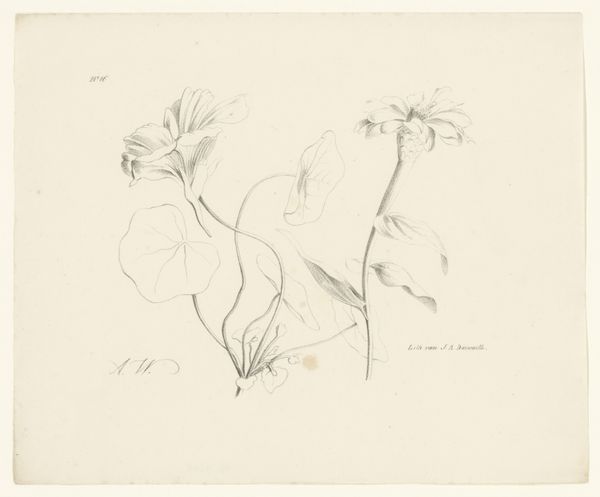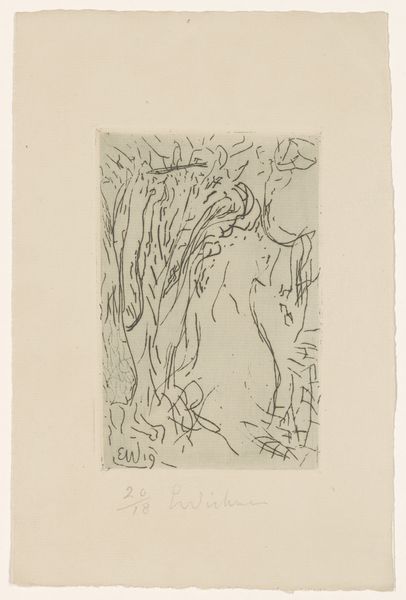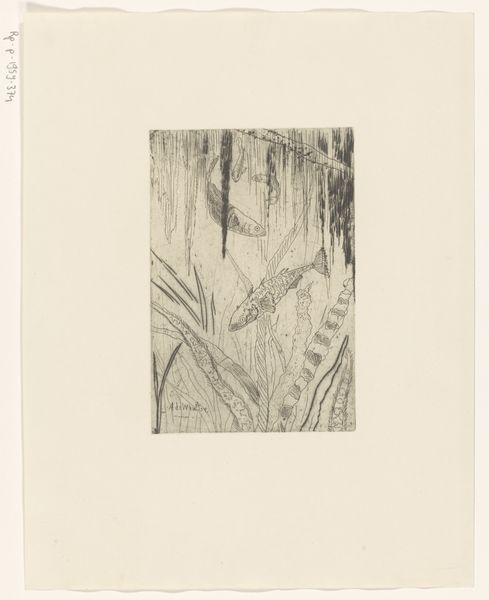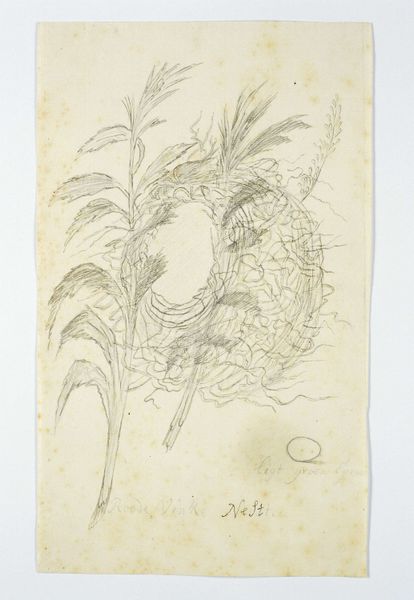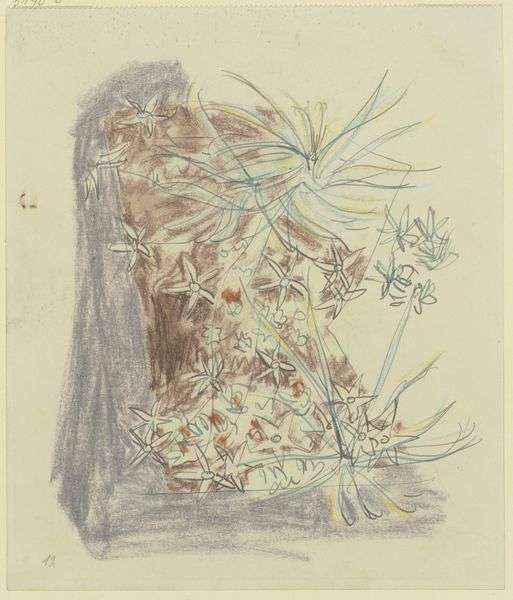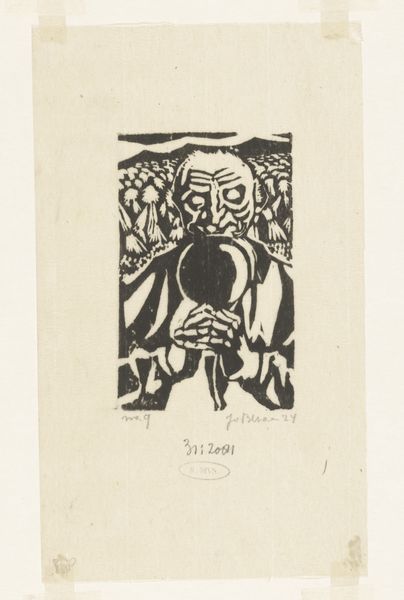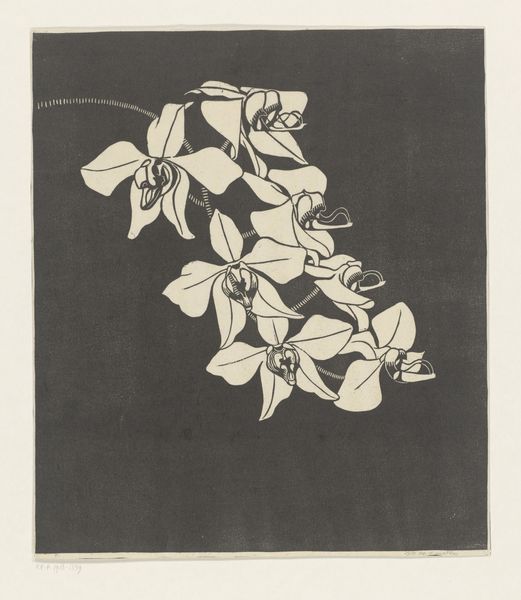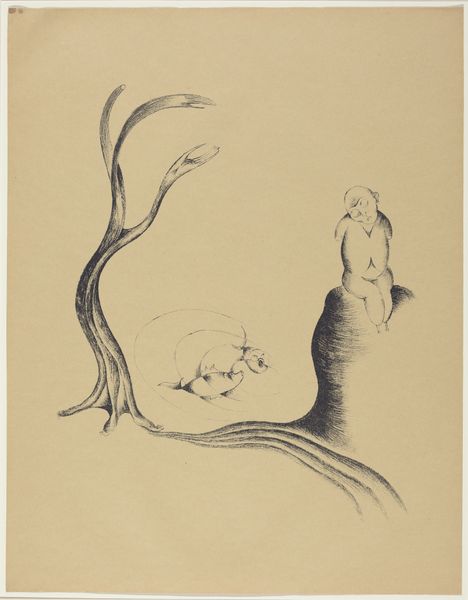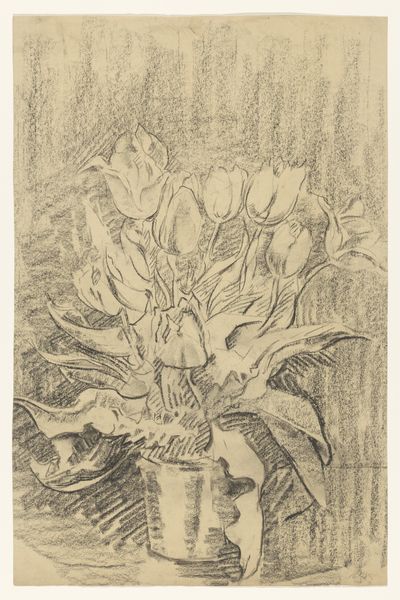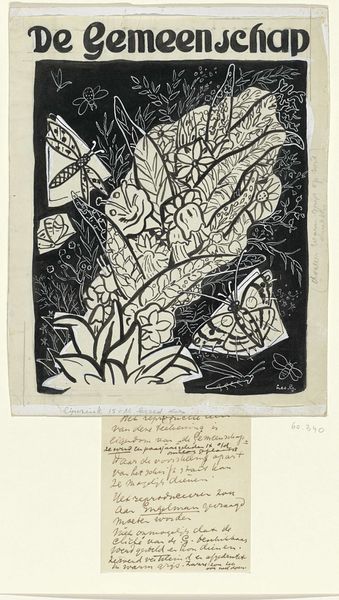
drawing, ink
#
portrait
#
drawing
#
flower
#
ink line art
#
ink
#
linocut print
#
line
Dimensions: height 154 mm, width 100 mm
Copyright: Rijks Museum: Open Domain
Curator: We’re now looking at “Hand en bloemen,” or “Hand and Flowers,” a drawing rendered in ink. The piece dates from sometime between 1891 and 1941, and is attributed to Leo Gestel. It’s currently held here at the Rijksmuseum. Editor: It feels spontaneous, doesn't it? Almost like a sketch, really capturing a fleeting moment. The contrast between the delicate hand and the rather chaotic, almost scribbled flowers, is striking. What's the context around its creation? Curator: Well, Gestel was quite prolific and navigated various artistic styles, and he often worked en plein air. It’s difficult to place it precisely within his oeuvre, but we know he grappled with representing modern life and nature. His evolution during this period mirrors broader shifts in the art world towards abstraction, though that hand is so precisely rendered, it suggests perhaps something more traditional initially. Editor: Precisely! The labor involved…it’s more evident in the hand, isn't it? The hand’s clearly defined form suggests observation, even study. I find myself questioning the role of the "sketch" in art, the labor often downplayed when works appear effortless. The ink medium allows for speed, but also precision if needed. Curator: Absolutely. Gestel also exhibited extensively, aligning himself with various artist groups and movements throughout his career, giving him significant public exposure, but his motivations seem quite intimate in the present drawing. It speaks to both his skill and his place within the public art world. Editor: I agree; in particular, what paper was employed? Its texture and how it received the ink influences not only the aesthetic, but how this piece functioned. Was it made as preparatory or autonomous work? Thinking about its support underscores the drawing’s nature as a product. It becomes even more important with so little color! Curator: Those are great questions; unfortunately the provenance of this piece has been difficult to ascertain and does not allow a material study of its components as of this writing, leaving the work open for the viewer’s consideration and interpretation! Editor: It's still quite thought-provoking, this piece. It has the air of casualness about it; nonetheless it pushes you to consider the materials and what's involved in its assembly. Curator: Agreed. The hand’s offering, the scribble hinting at so much possibility. It's a testament to how much can be conveyed with minimal means, and how relevant Gestel’s work remains in conversations about artistic production.
Comments
No comments
Be the first to comment and join the conversation on the ultimate creative platform.
